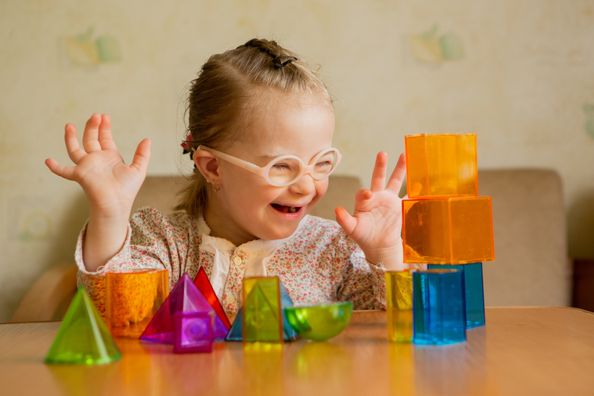Thinking outside of the box to maximize treatment outcomes is something Kristie Kemner-Schoen and Lynnae Glascock have been doing for years in their roles in pediatric therapy at Quincy Medical Group. Their success in partnering with their methods is a model they want to share.
Kemner-Schoen, Clinical Coordinator of Pediatric Speech Pathology, and Glascock, Clinical Coordinator of Pediatric Occupational and Physical Therapy, recently presented at a conference for the Illinois Speech and Hearing Association speaking to speech therapists on ways to incorporate sensory integration treatments into speech therapy.
Their methods include utilizing motor components and even fun to help children retain information and meet their long-term goals. That means moving away from or minimizing sitting at a table during therapy or utilizing pencil and paper tasks. “If you can attach a motor component or attach meaning to something or even fun you’re much more likely to remember those skills and participate,” said Kemner-Schoen. “You may be targeting the same aspect that you would be using a pen and paper, you’re just doing it in motion.”
Partnering speech therapy and occupational therapy techniques were something that derived out of analyzing the best options for their patients and the changing needs of kids today. “We’re dealing with a different set of children now,” explained Kemner-Schoen. “ We have a lot more complex cases, and we have to meet that need.”
Though their target audience at the conference was speech therapists, they’re not stopping there. They have plans to speak to regional school districts as well on the positive impact integrating sensory-friendly environments can have on learning. They are both realistic with the challenges of making these changes in a classroom but know in the long-run these changes can make a larger impact on learning.
“We understand that teachers are in a situation where they may have 25 to 30 kids and they don’t want to lose control of their classroom,” said Glascock. “But, we focus on what we can do. We try to give them as many options as we can. Our presentation provides several scenarios you may see in a classroom and various options they can utilize to address them.”
In the end, it’s the progress that they have seen with their young patients that validates their methods. “We’ve seen such success with our kids and have seen them progress so much faster. They like coming to therapy and have fun. They’re working they just don’t know it, because they’re playing at the same time,” explained Glascock. “We’ve been doing this for a long time now, and have seen so much success with it we want to make other people know about the powerful strategies too.”
Health Topics:







